Situated at around 30 kilometres from Belagav city in North Karnataka, Mugut Khan Hubli is “a small town of 12,000 souls” as the district revenue records describe it. M. K. Hubli is nothing like the more famous Hubballi, the city of robust commerce also in North Karnataka. It got its name from a 19th century Sufi saint from Vijayapura who was also a native healer. The nomad settled in this town situated on the banks of river Ghataprabha, whose name means “a pot of sunshine”’ in Sanskrit. Mugut Khan Dargah attracts a large number of believers from Maharashtra, Andhra Pradesh and other regions.
M. K. Hubli is also among the few places in the country chosen for the interment of the ashes of Mahatma Gandhi. A small memorial is built around the site of the interment off the service road below the Bengaluru-Pune national highway. Some travelers stop to pay obeisance here. Another point of the detour is the Ashwath Lakshmi Narasimha temple on the banks of the Ghataprabha, a few kilometres off the main road.
However, the most majestic of all monuments in town is the resting place of Gangambike, wife of Basaveshwara, the 12th century reformer and saint-poet fondly called Basavanna.
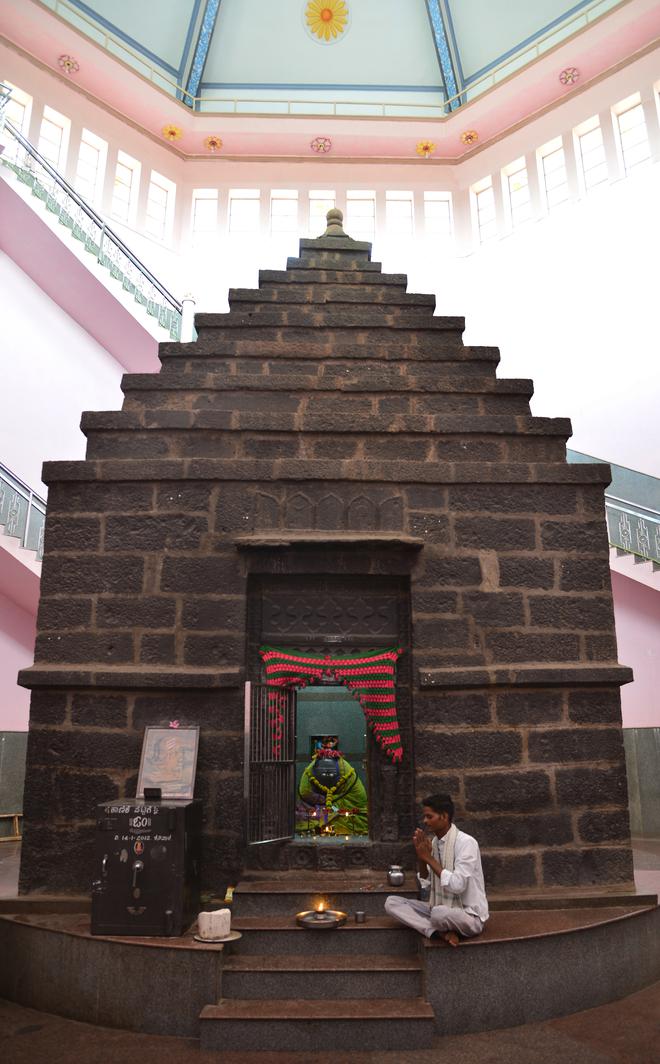
The unusual route
The 105-feet tall cylindrical concrete structure is built right in the middle of the river. It surrounds a temple built on the riverbed. It protects the sanctum from being immersed in the water. It has a raft connecting it to the main entrance. Visitors have to climb a few stairs to enter cantilever bridge to reach the spherical dome that covers the sanctum. They can use one of the two flights of stairs to descend into the basement to reach the stone temple. The idol is an uncarved block of black stone.
Akka Gangambike, a Sharane and a Vachana poet in her own right was the daughter of Baladeva Mantri, Basavanna’s maternal uncle. She was married to Basavanna at a young age. Basavanna later also married Neelambike or Akka Neelamma, younger sister of King Bijjala of the Kalachurya dynasty of Basava Kalyan. Neelamma had a son Balasangayya, who died in infancy. Neelamma and a few other Sharanas are buried in Kudala Sangama across the river from Basavanna’s memorial.
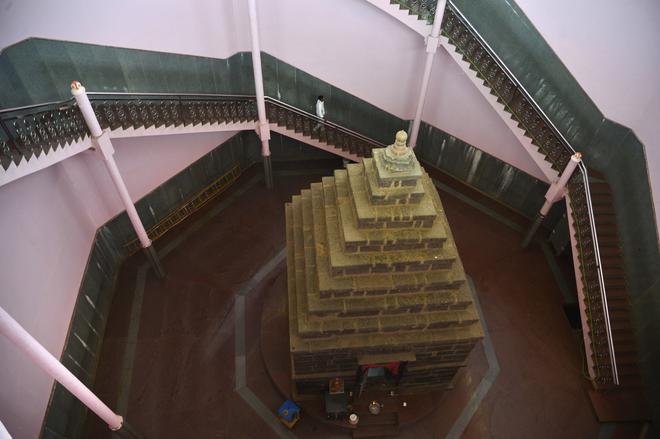
Many feel that the contribution of Gangambike to the Kalyana Kranti (or the cultural revolution of Basava Kalyan that broke the barriers of caste and gender) is not adequately acknowledged. It is during the two-day fair held here on Makara Sankranti and the next day that huge crowds gather here. Some, however, feel that this monument itself too has not got the recognition that it deserves. “This deserves to be developed and promoted on the lines of Kudala Sangama,’‘ says G.S. Halasagi, M.K. Hubli based teacher and secretary of the Akka Gangambike Trust.
Mr. Halasagi and his colleague Gangadhar Kotagi, have founded the Akka Gangambike Trust to create awareness about Gangambike. For years, they demanded that the Kudala Sangama Development Board take over the place, before the government heard them.
B.S. Yediyurappa, former Chief Minister, released ₹5 crore for the project and former bureaucrat S.M. Jamdar, as head of the Kudala Sangama Development Board, personally supervised the project. It was built between 2009-2012. The trust organises mass lunches every new moon day.
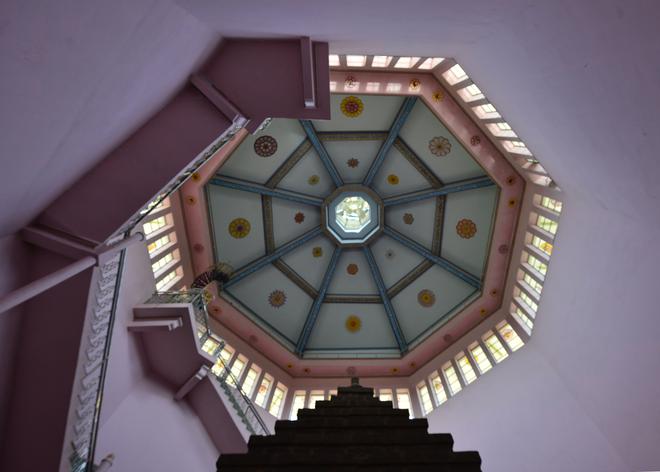
Confusion about structure
Mr. Halasagi says people for a long time did not even know it was the grave of Gangambike. “People believed it to be the temple of Holi Gangamma. We had to create awareness among them that it was the grave of Basavanna’s wife and not a local deity’s temple,’‘ says Mr. Halasagi. The temple was immersed in the Malaprabha river after the Naviluteertha dam was built upstream, near Saundatti in 1975. “For decades, we could not see it for nine months in a year. After a visit to Kudala Sangama in the 1990s, we decided to urge the government to build a similar structure to protect the monument,’‘ he said.
“A lot of work has been done to protect and develop the monuments of Sharanas. But a lot more needs to be done,’‘ says Veeranna Dande, retired professor of Kannada and Vachana researcher. His three-volume work “Sharanara Smarakagalu” identifies 630 monuments associated with 125 Sharanas in 200 villages of Karnataka, Maharashtra, and undivided Andhra Pradesh.
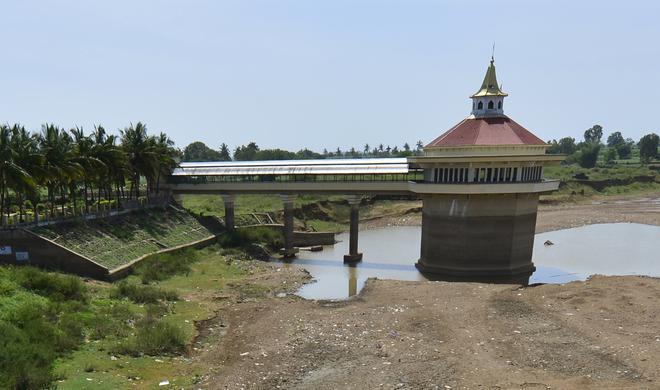
He demands that the Lingayat Maths across the state should tie up with educational institutions and cultural organisations, to organise guided tours of such monuments. “If each Math organises a trip to the monuments in its vicinity once a week, there will be an increased interest in the life and contribution of Sharanas who worked along with Basavanna in social reform. Along with this, we also need to promote the practice of discussing the intellectual contribution of these Sharanas to Indian thought. Otherwise, they will just remain another set of old buildings that we pray in, but have forgotten what they stand for,’‘ Prof Dande said.
Basappa Pujari, commissioner, KSDB, said that a detailed project to develop the Gangambike memorial that includes infrastructure development and tourism promotion, is ready. “The State government has already approved a project of ₹ 2.5 crore for this monument. We will start work once the funds are released,’‘ he said.
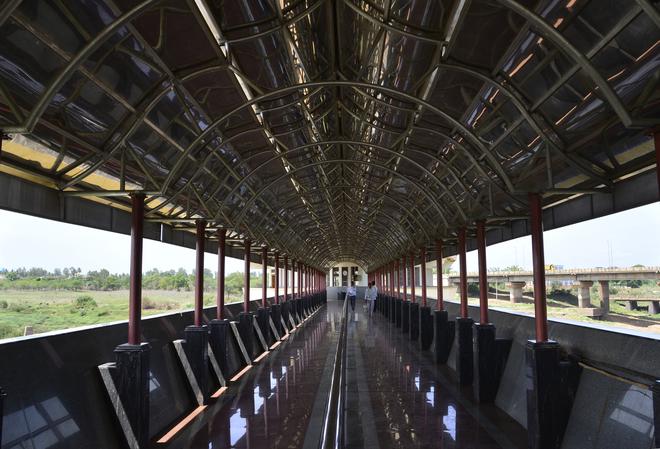
How she met her end
Talking about the circumstances under which Gangambike died, Shivanand Vibhutimath, M. K. Hubli-based writer, says, “King Bijjala was killed in the aftermath of the cultural revolution in the 12th century. Upset with the turn of events, Basavanna, his family members, and followers left Basava Klayana in several batches. They moved in different directions - some towards Kudala Sangama, some Shreeshaila, and some others crossed Maharashtra towns like Solapur and Sangli to enter what is now Belagavi district. However, they faced an attack by soldiers loyal to King Rayamurari Sovideva, Bijjala’s successor. Akka Gangambike was left profusely bleeding and died in Kadaravalli town, across the Ghataprabha river. Her followers buried the body on the eastern banks of the river and built a stone shrine over it. It remained unnoticed for centuries, till the Kittur Kings built a stone temple in its place in the 19th century.”







